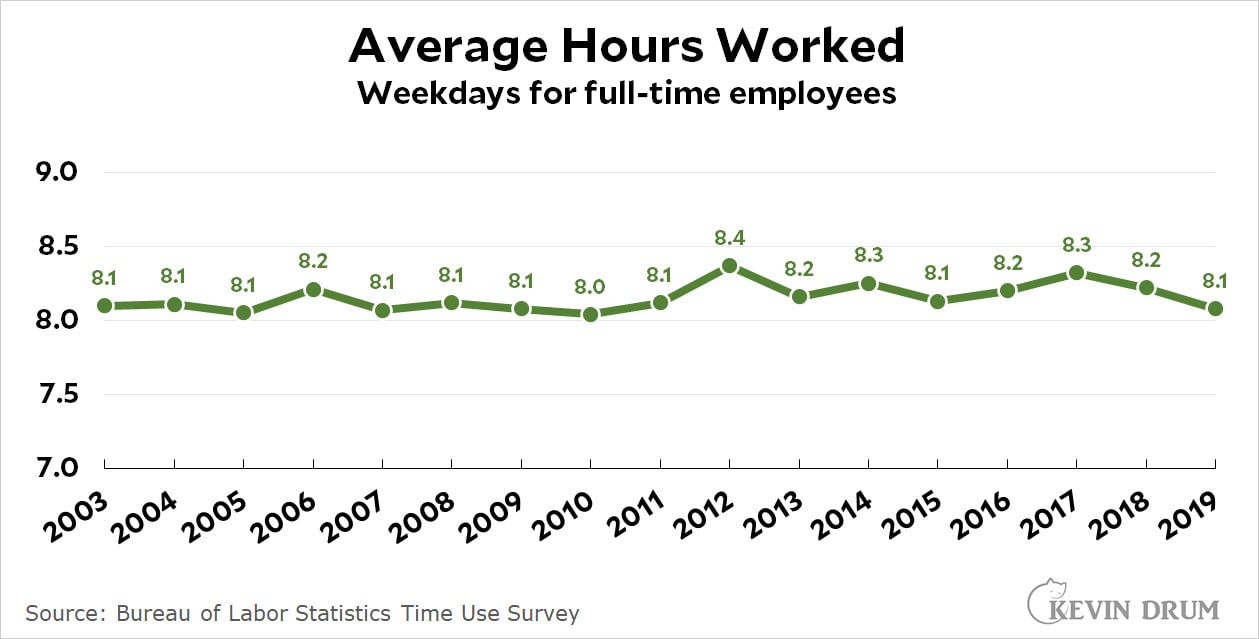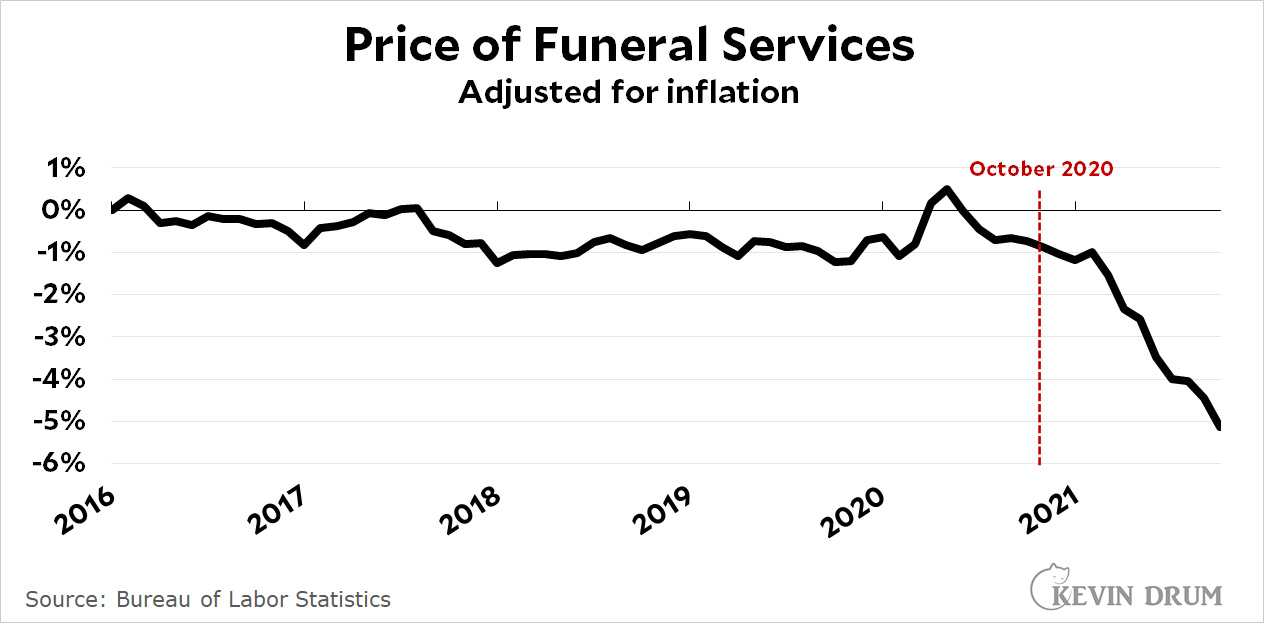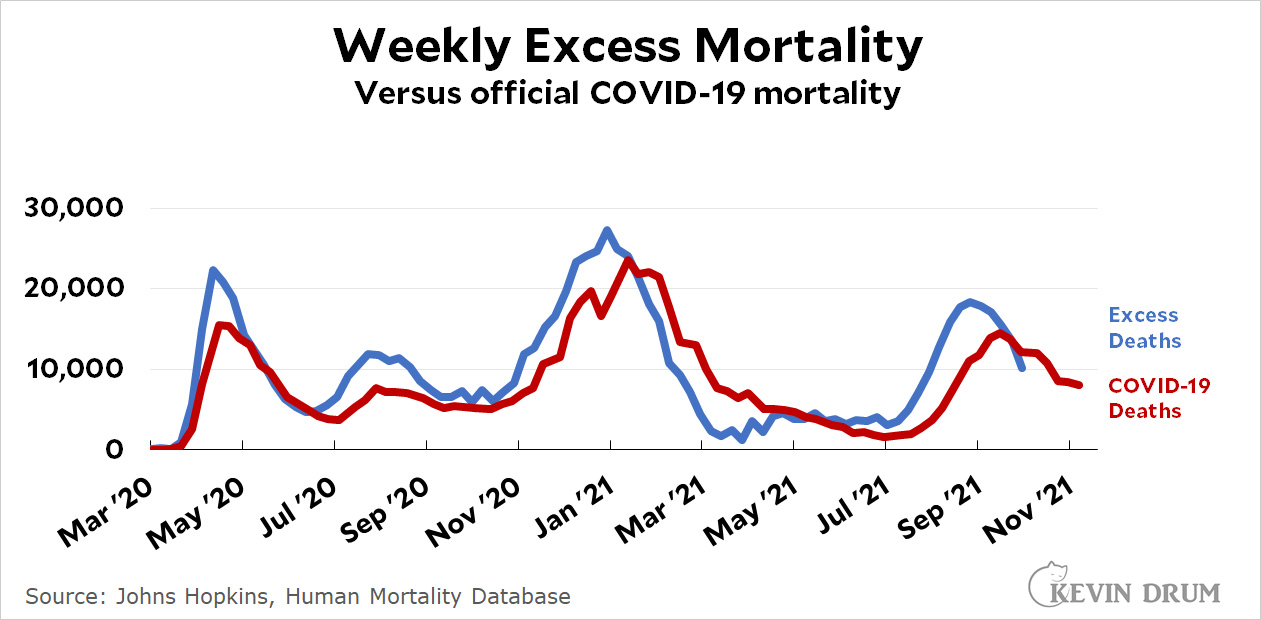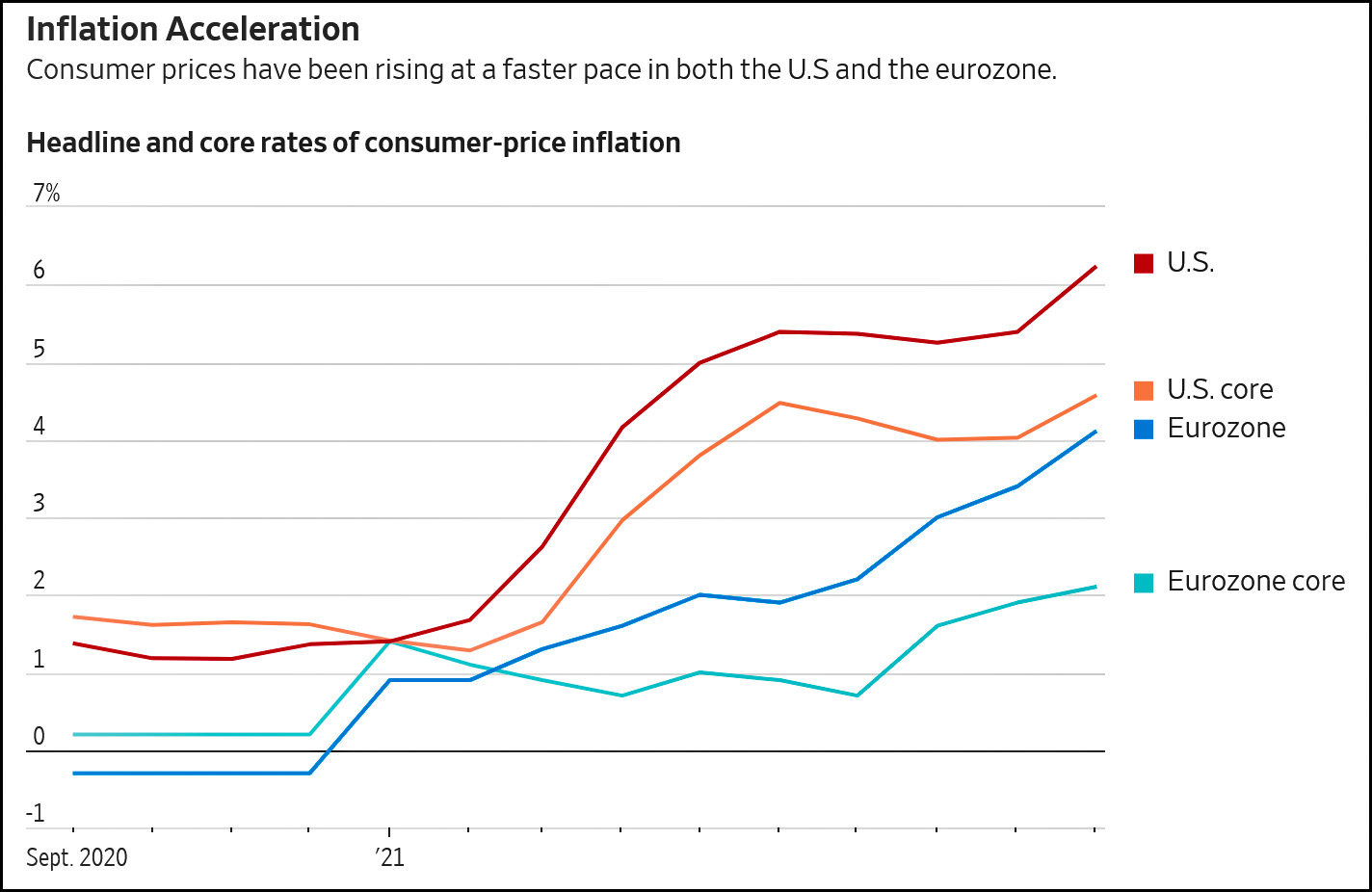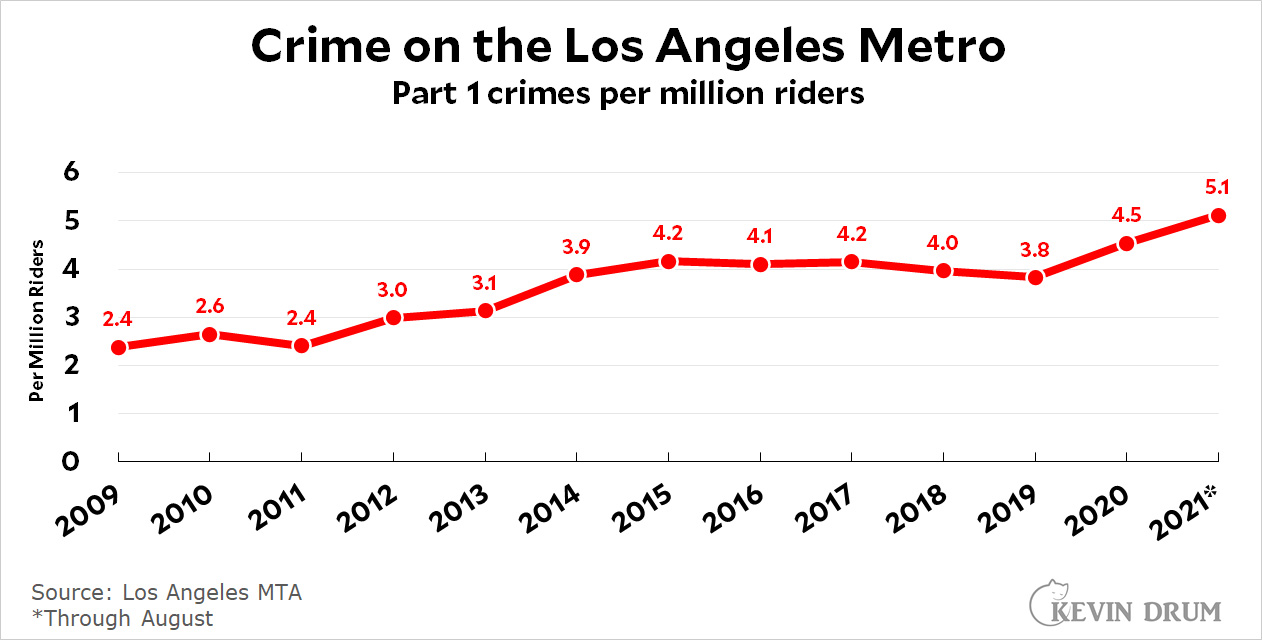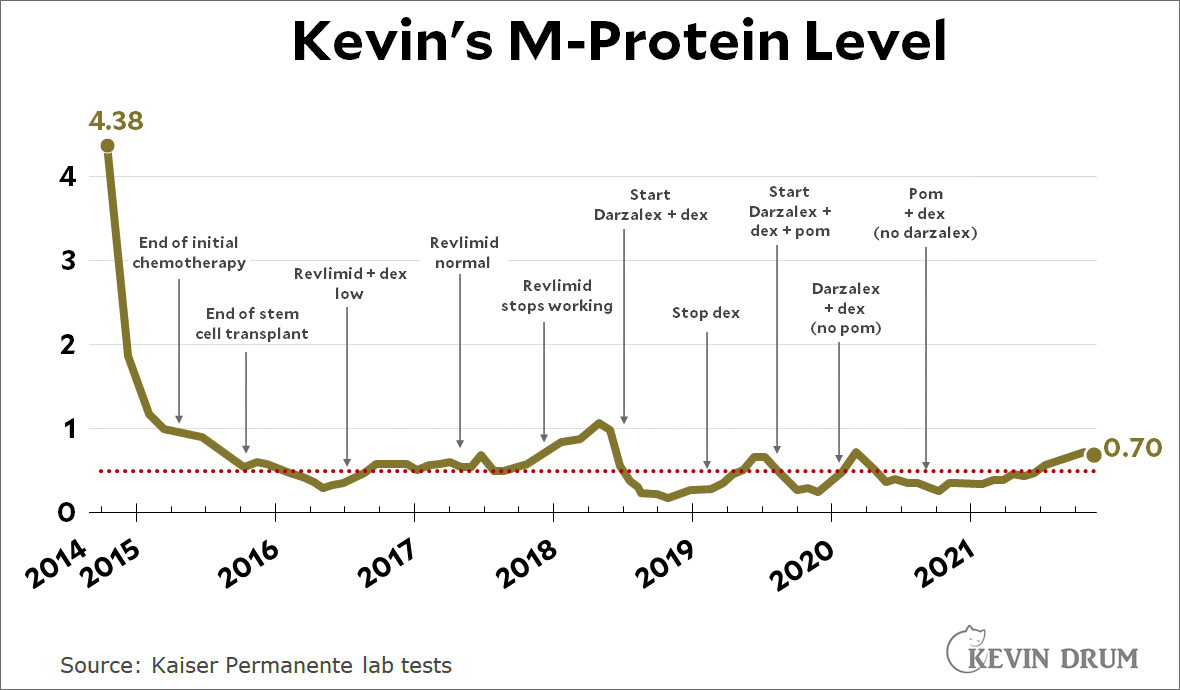Farhad Manjoo, in his continuing quest to be wrong about everything, says that Texas is the new California:
I’ve lived in California nearly all my life, and it’s still more likely than not that I will remain here....Still, there’s plenty going wrong — soaring housing costs, devastating poverty and inequality, and the cascading disasters brought about by a change in what was once our big selling point, the climate. Not a month goes by that I don’t wonder what I’m doing here. There’s got to be somewhere better, right?
....As the Golden Gate shuts, the Lone Star beckons. If you’re looking for an affordable, economically vibrant city that is less likely to be damaged by climate change than many other American cities, our data shows why Texas is a new land of plenty.
I am tired of this. I'll acknowledge right off that California has expensive housing and this is a big problem. For some people this is enough to lure them to Texas, and I totally sympathize.
But this is far from the whole story, which is considerably less favorable toward Texas. Since Manjoo starts off with climate change, let's start there too.
Climate Change
First off, just for context, here's an overview of how weather-related fatalities stack up today:
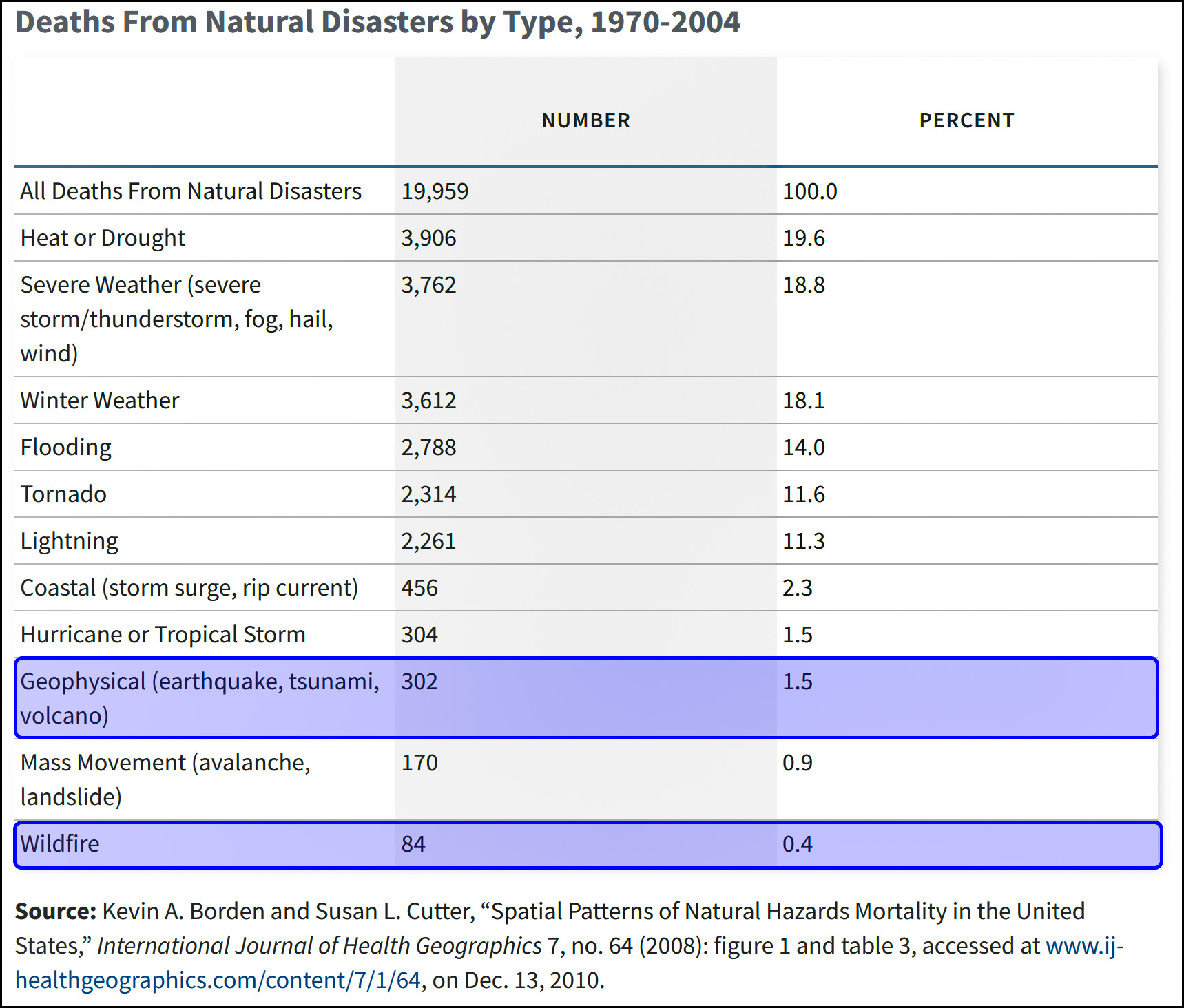 You will note that California-style natural disasters—earthquakes and wildfires—add up to basically nothing, both in absolute terms and per capita. They're dramatic and they get a lot of press, but the real killers are heat, cold, floods, and storms, all of which are far more prevalent in Texas than California.
You will note that California-style natural disasters—earthquakes and wildfires—add up to basically nothing, both in absolute terms and per capita. They're dramatic and they get a lot of press, but the real killers are heat, cold, floods, and storms, all of which are far more prevalent in Texas than California.
So what does this mean for global warming? Texas and California are both southern states, which means they'll both see similar amounts of warming over the next few decades. However, Texas starts with a much higher average temperature than California. What's more, there's more than just temperature to climate change. There's also floods, storms, drought, and other forms of climate variability. So it should not come as a surprise that Texas is more vulnerable to climate change than California:
 Texas faces greater danger of crop failures, weather-related deaths, higher energy costs, and labor risks. But which counts more, crop damage or mortality? Energy costs or labor? The best way to make these comparisons is to put them on a level playing field by simply pricing them out. When you do this, Texas comes out in much worse shape than California:
Texas faces greater danger of crop failures, weather-related deaths, higher energy costs, and labor risks. But which counts more, crop damage or mortality? Energy costs or labor? The best way to make these comparisons is to put them on a level playing field by simply pricing them out. When you do this, Texas comes out in much worse shape than California:
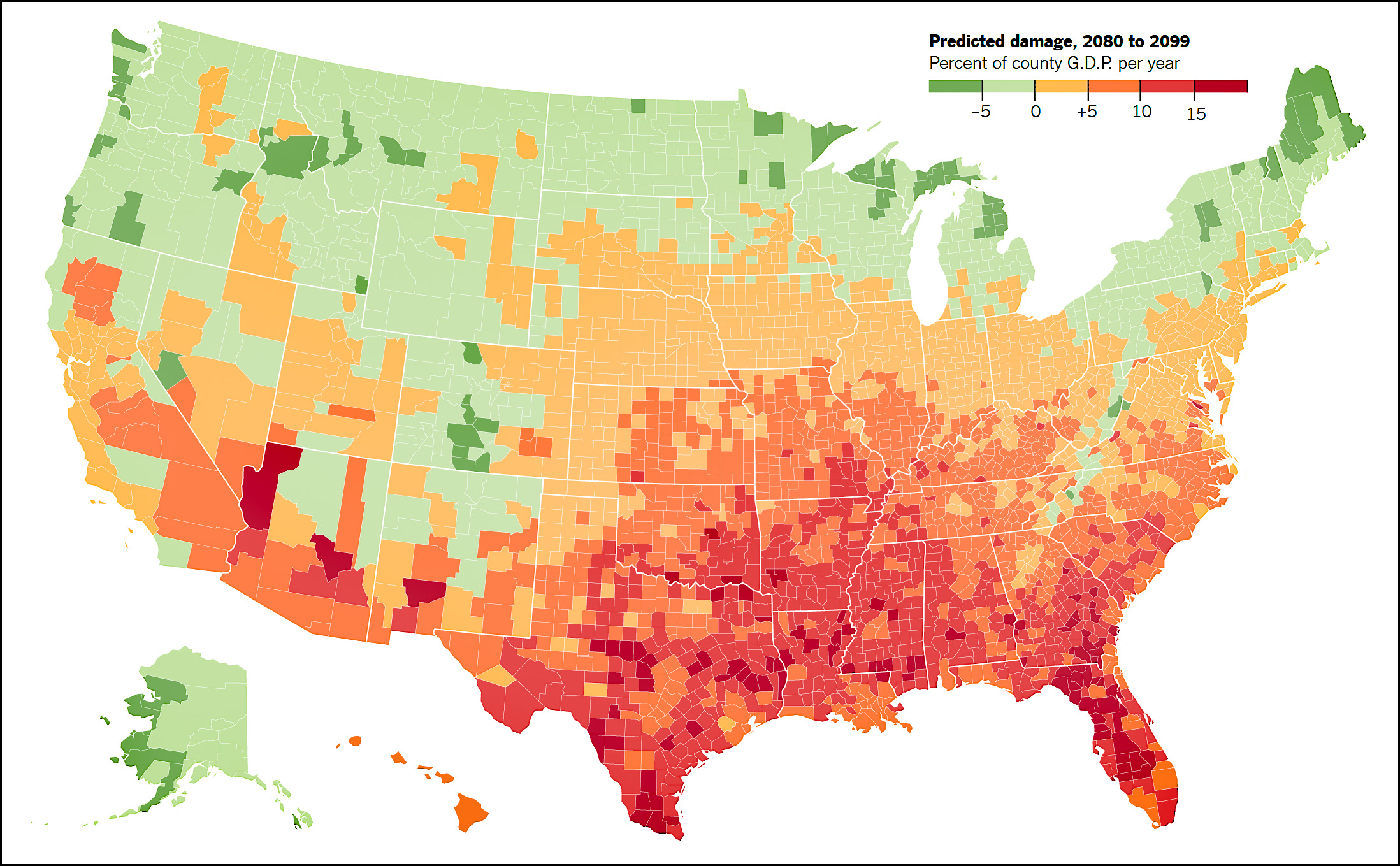 If you choose to live in the fairly narrow bits of residential California that are vulnerable to wildfires, climate change poses a significant threat. But it doesn't take much to avoid that. If you live in ordinary urban and suburban areas, the danger is basically zero.
If you choose to live in the fairly narrow bits of residential California that are vulnerable to wildfires, climate change poses a significant threat. But it doesn't take much to avoid that. If you live in ordinary urban and suburban areas, the danger is basically zero.
Bottom line: climate change is a problem everywhere, but it's likely to be a bigger problem in Texas than in California.
Economy and Taxes
Let's start with the basics. Here is household income in Texas and California going back four decades:
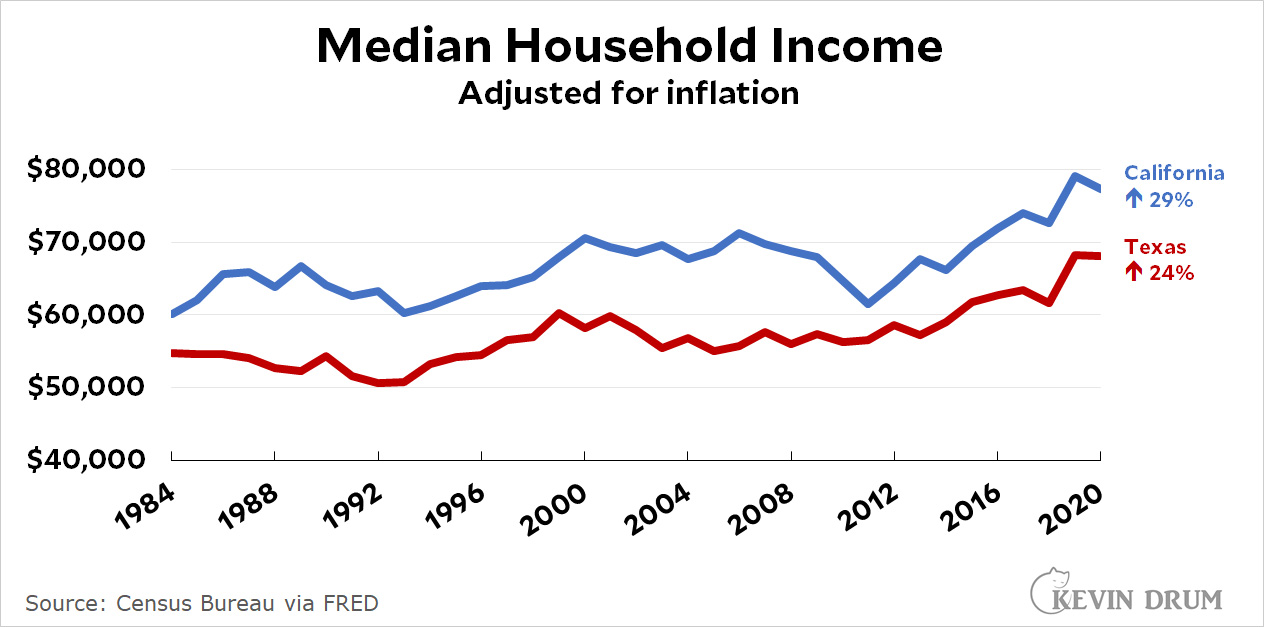 This is median income, so it's not affected by either oil barons or Silicon Valley zillionaires. California has a considerably higher median income and it's grown faster since these statistics have been kept.
This is median income, so it's not affected by either oil barons or Silicon Valley zillionaires. California has a considerably higher median income and it's grown faster since these statistics have been kept.
But wait. Texans keep more of their income than Californians thanks to their famously low taxes. But famous as this reputation may be, it's entirely undeserved. Here's how it nets out depending on your income level:
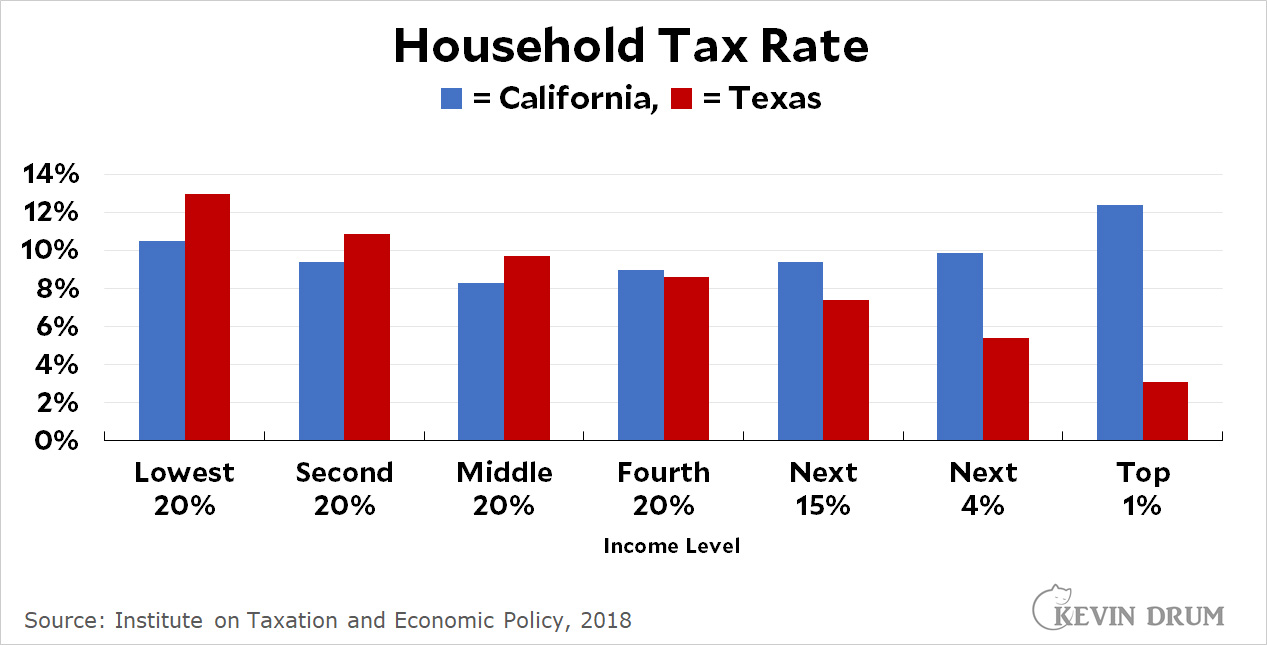 Tax rates in Texas are low only if you're affluent: If you're upper middle class they're a little bit lower than California and if you're in the top 1% they're a lot lower. But for everyone else they're either higher or about the same. As a result of this and other things, Texas has a higher poverty rate than California:
Tax rates in Texas are low only if you're affluent: If you're upper middle class they're a little bit lower than California and if you're in the top 1% they're a lot lower. But for everyone else they're either higher or about the same. As a result of this and other things, Texas has a higher poverty rate than California:
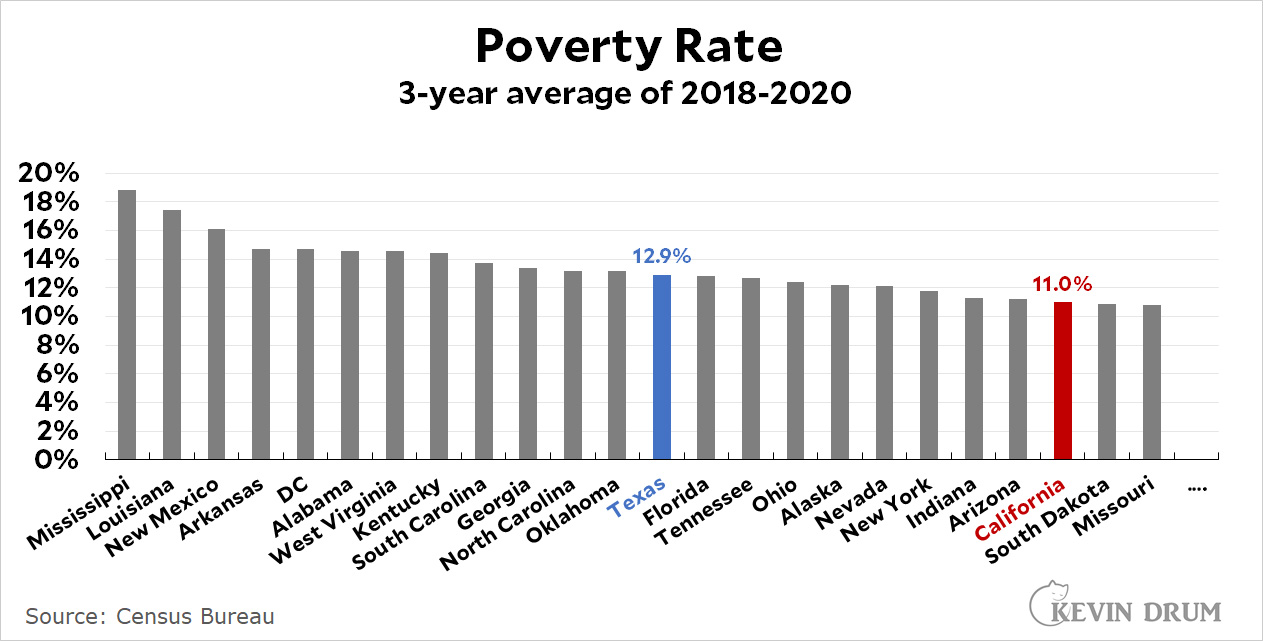 If you're relatively well off, maybe you don't care that your state's poverty rate is high and you're basically funding it on the backs of the poor and working class. But just think of what that says about your affluent neighbors. Basically, this:
If you're relatively well off, maybe you don't care that your state's poverty rate is high and you're basically funding it on the backs of the poor and working class. But just think of what that says about your affluent neighbors. Basically, this:
 Texas has more low-income residents than California but covers far fewer of them via Medicaid. Despite this, they have refused to adopt the almost-free Medicaid expansion in Obamacare that they're paying for anyway since it's funded by federal taxes. They would literally rather let their money go down a hole than use it to provide health care for the poor. As a result, 20% of Texans are uninsured compared to 8% of Californians.
Texas has more low-income residents than California but covers far fewer of them via Medicaid. Despite this, they have refused to adopt the almost-free Medicaid expansion in Obamacare that they're paying for anyway since it's funded by federal taxes. They would literally rather let their money go down a hole than use it to provide health care for the poor. As a result, 20% of Texans are uninsured compared to 8% of Californians.
Bottom line: If you're affluent, Texas probably looks pretty good compared to California. But if you're not, your income is lower; your tax rates are higher; you're more likely to be in poverty; and you're way more likely to be uninsured. If you call this an economic success story, you live in a different universe than I do.
Weather
Let's talk now about the weather. This is sort of unfair, but it has to be done. Here, for example, is a comparison of Dallas and Los Angeles:
 There's a reason California is famous for its climate and Texas is infamous. It's because California has a great climate and Texas has a terrible one. Summers in Los Angeles average about 85°, which is hot, but summers in Dallas are a roasting 95°. In winter LA remains a balmy 65° while Dallas is a chilly 55°.
There's a reason California is famous for its climate and Texas is infamous. It's because California has a great climate and Texas has a terrible one. Summers in Los Angeles average about 85°, which is hot, but summers in Dallas are a roasting 95°. In winter LA remains a balmy 65° while Dallas is a chilly 55°.
Lows are similar. During the summer, temps in Dallas remain above 70° even at night, while Los Angeles provides a respite from the heat. During the winter LA never gets near freezing, while Dallas does.
Now, sure, this is why God invented heating and air conditioning. But get real. Dallas isn't even the hottest part of Texas, and it's pretty miserable for half the year. Los Angeles, by contrast, is pretty livable all year round.
Nor is this just a matter of comfort. It also kills people. In particular, Texans seem to have a hard time not locking their kids in cars on hot days:
 Even after adjusting for California's much lower incidence of freezing weather, it ranks far better than Texas in winter driving fatalities:
Even after adjusting for California's much lower incidence of freezing weather, it ranks far better than Texas in winter driving fatalities:
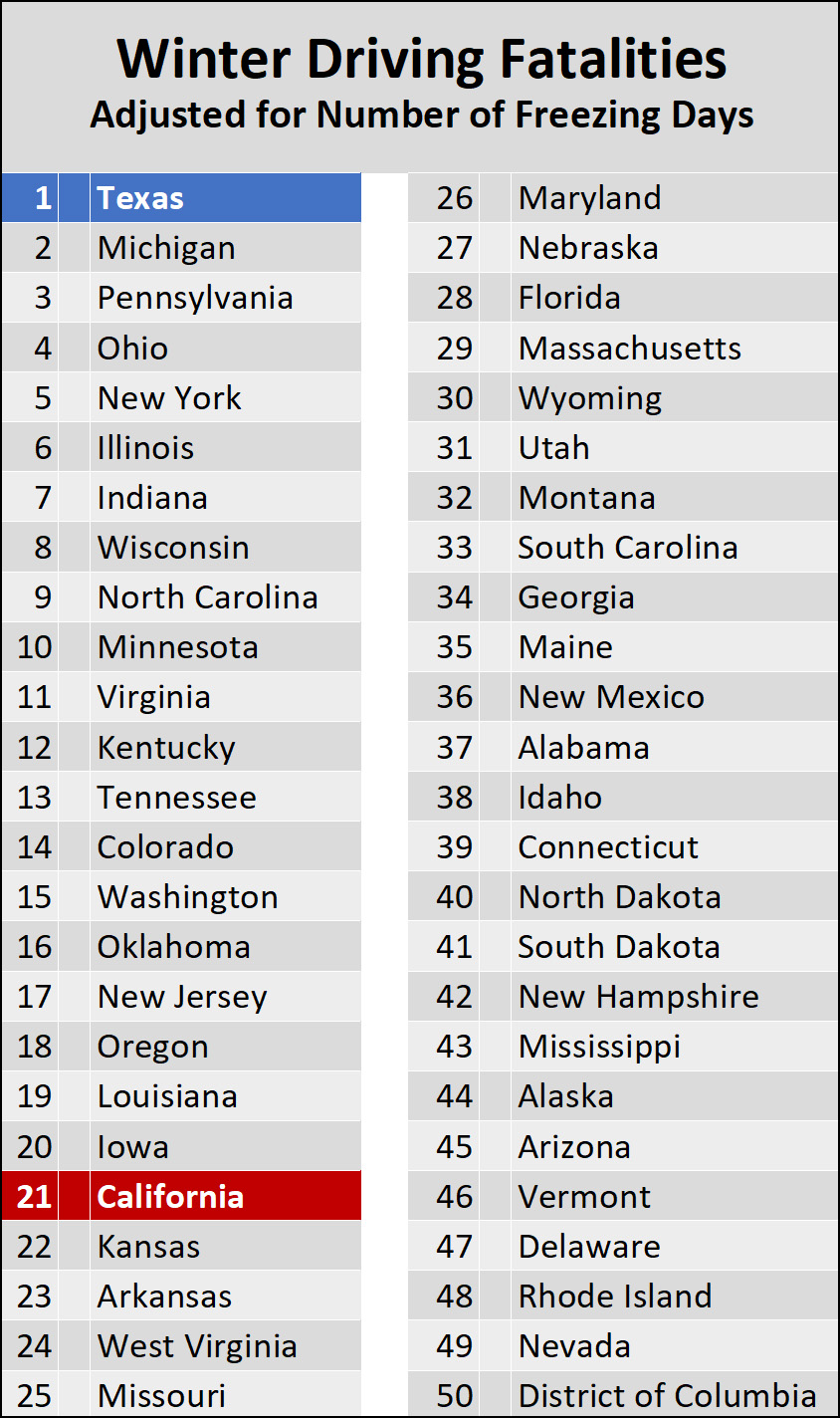 Safety
Safety
You've probably heard that California is a high-crime state. That was true at one time, but California has worked hard to reduce crime and is now a little bit safer than Texas:
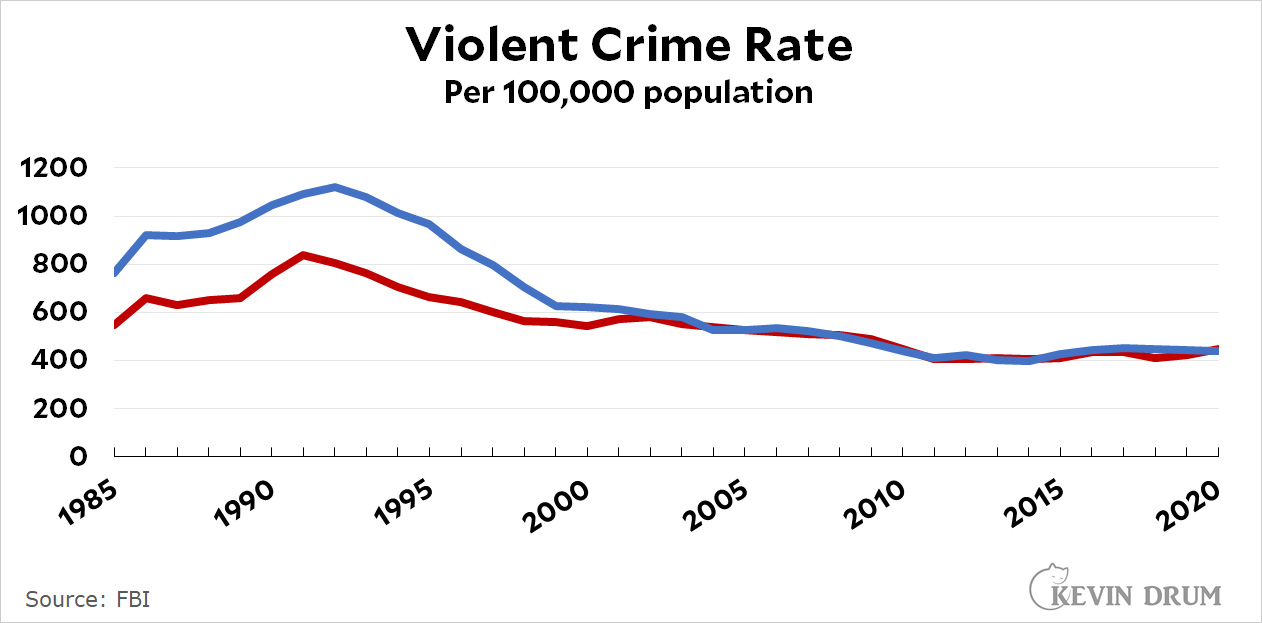
 It's also safer to drive in California than in Texas:
It's also safer to drive in California than in Texas:
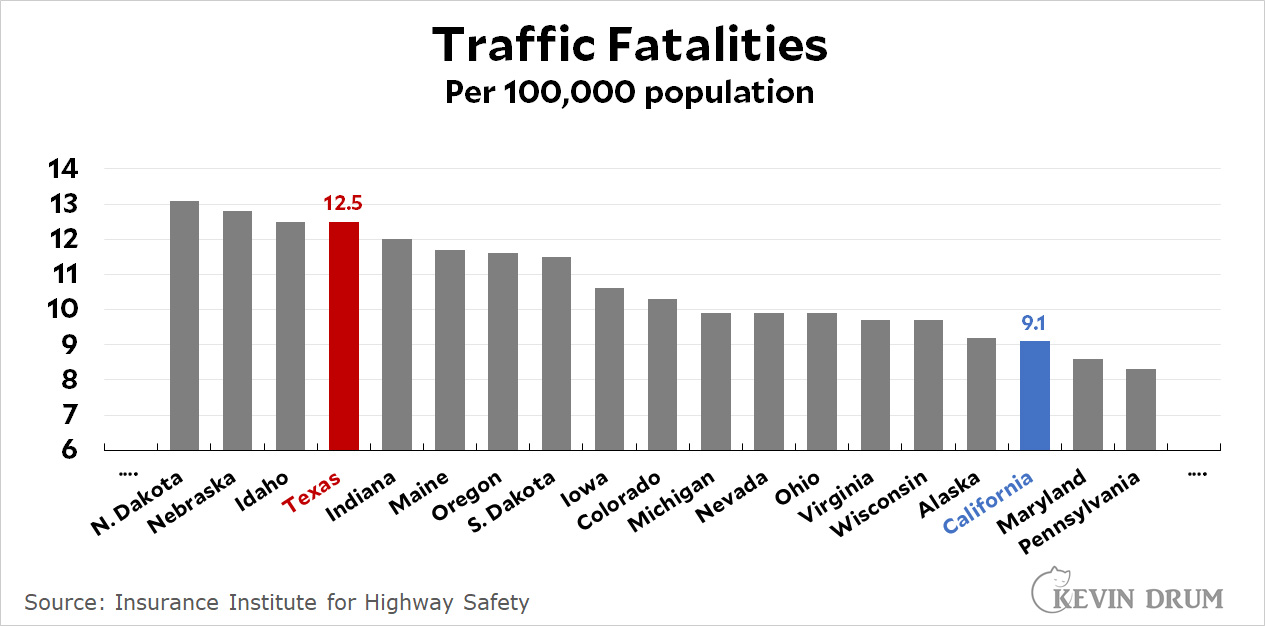 Education
Education
There was a time when Texas schools produced modestly better results than California schools. That's no longer true:
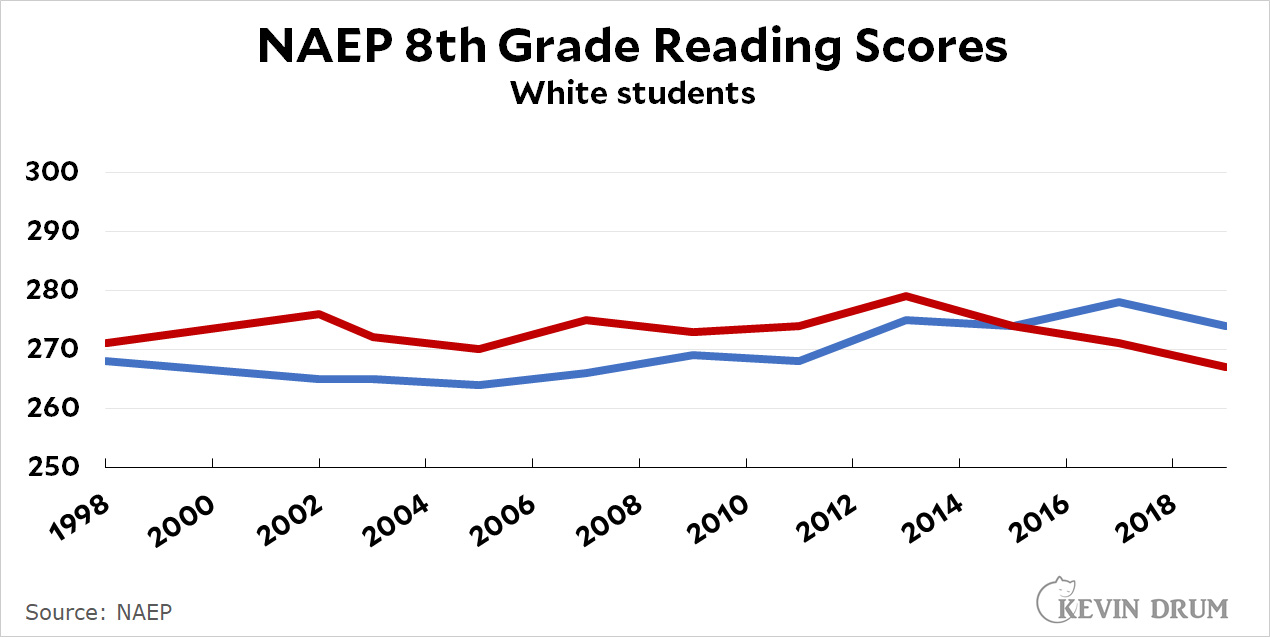
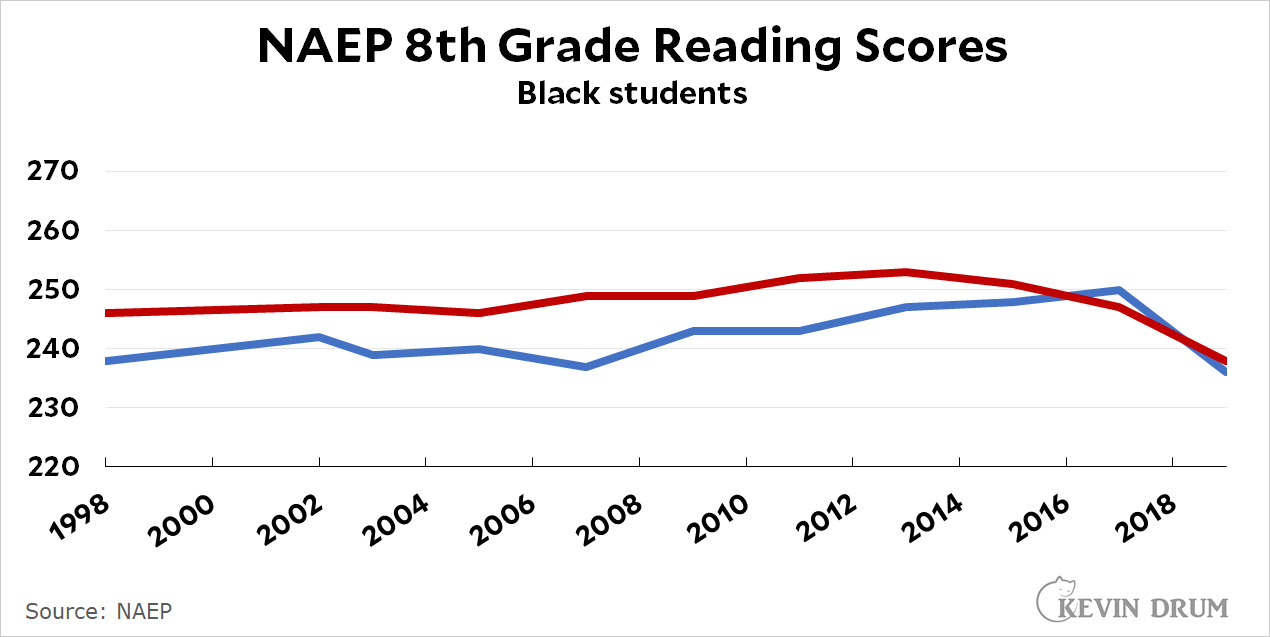
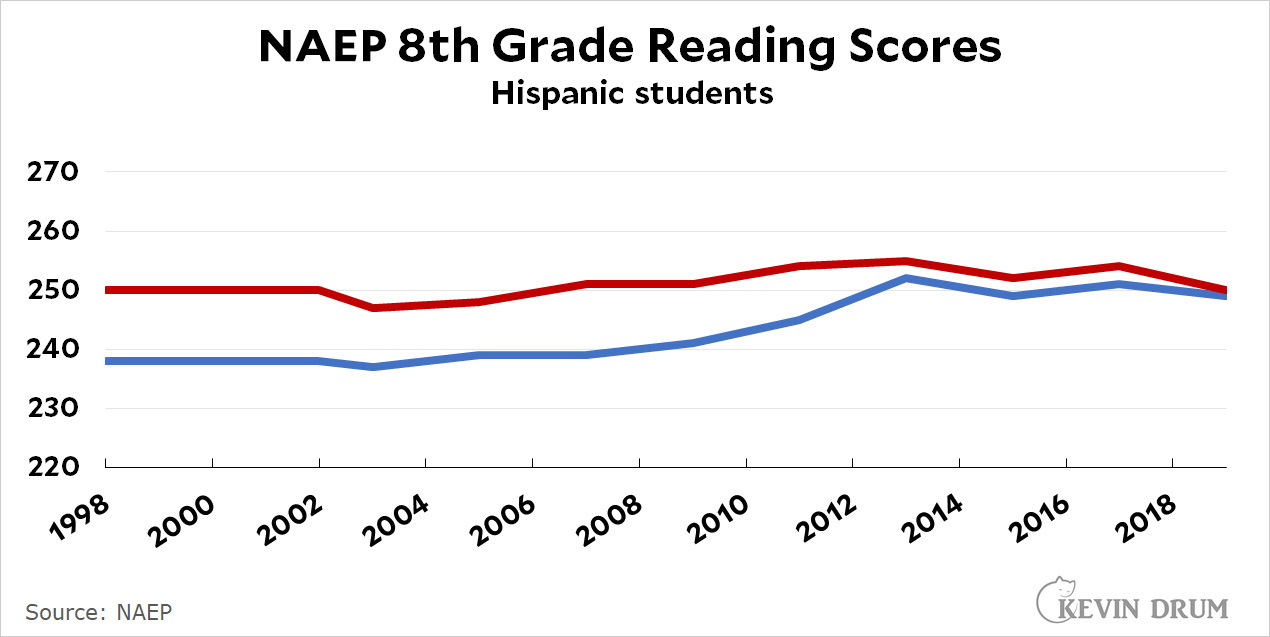 With the exception of the 2019 score for Black students—which may be an error in the underlying data—California has gotten steadily better and Texas has declined. Today, white students in California perform significantly better than in Texas, while Black and Hispanic students perform about the same.
With the exception of the 2019 score for Black students—which may be an error in the underlying data—California has gotten steadily better and Texas has declined. Today, white students in California perform significantly better than in Texas, while Black and Hispanic students perform about the same.
Then there's higher education. SmartAsset puts California at #5:
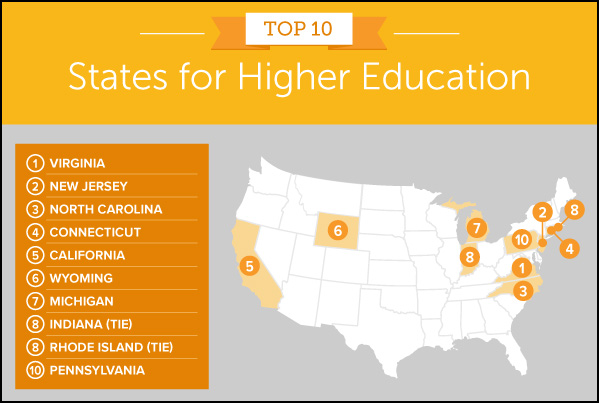 Keep scrolling and scrolling and you'll eventually find Texas at #28. Likewise, USNews puts California at #3 and Texas at #31. On a different metric (number of highly ranked universities) Stacker places California #1 and Texas #5.
Keep scrolling and scrolling and you'll eventually find Texas at #28. Likewise, USNews puts California at #3 and Texas at #31. On a different metric (number of highly ranked universities) Stacker places California #1 and Texas #5.
Texas is simply nowhere near the overall quality of California in higher education. This is something to think about if you're hoping to get your kid the in-state tuition rate at a good college.
Other Stuff
California has nine national parks to Texas's two.
As the ads say, you can surf, ski, and hike all in a single day in California. In Texas you can . . . hike.
Manjoo mentions diversity in his piece, but come on. California, like Texas, is literally minority white:
 There's not a nickel's worth of difference in the diversity of California and Texas. They're both near the top of the pack.
There's not a nickel's worth of difference in the diversity of California and Texas. They're both near the top of the pack.
But speaking of that, California is certainly a much more welcoming place for gay and trans folks.
California is politically more liberal than Texas, and it's certainly true that both states do some dumb stuff. California, for example, recently passed a law that requires big toy stores to include a "generic" toy section in addition to boys and girls sections. This is typical California woo, and the butt of many a joke. Texas, by contrast, has passed a law that effectively bans abortion. It's up to you to decide if these are essentially the same. I sure don't think so.
Housing, Housing, Housing
There's a pretty simple conclusion to all this: It's all about housing.
 The (smallish) migration from California to Texas is nothing unusual. Throughout history, nice places have gotten popular and therefore more expensive, which has prompted people to seek cheaper pastures. In the case of California this means moving to nearly anyplace since it's cheaper nearly everywhere else. It's practically hydraulic in its operation.
The (smallish) migration from California to Texas is nothing unusual. Throughout history, nice places have gotten popular and therefore more expensive, which has prompted people to seek cheaper pastures. In the case of California this means moving to nearly anyplace since it's cheaper nearly everywhere else. It's practically hydraulic in its operation.
Texas has been the beneficiary of this because it's in a bit of a sweet spot. It's hardly the cheapest place to buy a home—in fact, it's kind of middling—but it's (a) reasonably cheap, (b) not in the deep South, (c) has a pretty good economy, (d) offers plenty of white-collar jobs, and (e) has some liberalish cities that are attractive to lots of Californians.¹
If you really just wanted cheap housing, you'd move to Mississippi or West Virginia. But most Californians wouldn't dream of moving to backwaters like that. Texas is sort of a compromise: on nearly every concrete metric it's not as good as California, but it's not way worse and it's pretty affordable. That's pretty much it.
¹But act fast! The favorite city of lefty Californians is Austin, and houses there are now going for an average of $536,000. That's still cheaper than LA or San Francisco, but the property taxes are higher and that adds up over time. Austin is suffering the usual fate of cheap but popular places: it's gotten so popular that it's no longer cheap.

